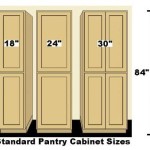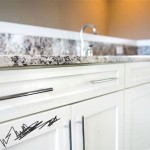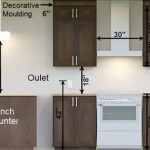DIY Outdoor Kitchen Cabinets: A Comprehensive Guide
The allure of outdoor cooking and entertaining has driven many homeowners to consider the addition of an outdoor kitchen. One significant aspect of any outdoor kitchen is the cabinetry, providing essential storage and counter space. While professionally installed custom cabinetry can be a substantial investment, constructing DIY outdoor kitchen cabinets presents a cost-effective and customizable alternative. This article details the key considerations, materials, and construction techniques involved in building durable and functional outdoor kitchen cabinets.
Key Considerations Before Construction Begins
Prior to any construction, careful planning is crucial. This involves assessing the available space, determining the desired layout, and selecting suitable materials that can withstand the elements. Neglecting these preliminary steps can lead to costly mistakes and unsatisfactory results.
Space Assessment and Layout Design: The initial step is to accurately measure the designated area for the outdoor kitchen. Consider the flow of traffic, proximity to the house (especially the indoor kitchen), and any existing features like patios, decks, or landscaping. The layout should be designed to optimize functionality, including designated zones for food preparation, cooking, and dining. Factors such as the placement of the grill, sink, refrigerator, and storage areas should be carefully considered to create an ergonomic workspace. A scaled drawing or 3D rendering can be invaluable in visualizing the final product and identifying potential issues before construction commences.
Material Selection for Weather Resistance: Outdoor cabinets are constantly exposed to varying weather conditions, including rain, sun, and temperature fluctuations. Therefore, selecting weather-resistant materials is paramount to ensuring longevity and preventing premature deterioration. Pressure-treated lumber, marine-grade plywood, and stainless steel are popular choices for the cabinet frames and shelving. For cabinet doors and exposed surfaces, options include durable hardwoods like cedar, redwood, and teak, which possess natural resistance to rot and insects. Composite materials, such as high-density polyethylene (HDPE) and PVC board, offer excellent weather resistance and require minimal maintenance. The choice of hardware, including hinges, handles, and drawer slides, should also prioritize corrosion resistance. Stainless steel or marine-grade hardware is recommended to prevent rust and ensure reliable functionality.
Building Codes and Permits: Before beginning construction, it is imperative to research and comply with local building codes and regulations. Many municipalities require permits for outdoor kitchen construction, particularly if the installation involves gas lines, electrical wiring, or plumbing. Failure to obtain the necessary permits can result in fines, delays, and even the removal of the structure. Contacting the local building department will provide information on specific requirements, including setback regulations, structural standards, and safety guidelines. Adhering to building codes ensures the safety of the structure and its occupants, as well as compliance with legal regulations.
Materials and Tools Required
The success of a DIY outdoor kitchen cabinet project hinges on having the appropriate materials and tools. A well-equipped workspace will streamline the construction process and enhance the quality of the finished product. The following list outlines the essential materials and tools needed for building sturdy and weather-resistant cabinets.
Lumber and Sheet Goods: Pressure-treated lumber is typically used for the cabinet frame because of its resistance to rot and insect infestation. The dimensions of the lumber will depend on the desired size and configuration of the cabinets. Marine-grade plywood, known for its water resistance, is ideal for shelving and cabinet backs. Alternatively, exterior-grade plywood can be used, but it should be properly sealed and protected from the elements. For cabinet doors and exposed surfaces, consider using cedar, redwood, teak, or composite materials like HDPE or PVC board.
Fasteners and Hardware: Stainless steel screws are essential for assembling the cabinet frame and attaching the plywood panels. Galvanized nails can also be used for non-structural connections. High-quality exterior-grade wood glue should be used in conjunction with screws or nails to create strong and durable joints. Stainless steel hinges, handles, and drawer slides are necessary for the cabinet doors and drawers to withstand the outdoor environment. Magnetic catches or latches can be used to keep the cabinet doors securely closed.
Tools: A circular saw is essential for cutting lumber and plywood to the required dimensions. A miter saw is useful for making accurate angled cuts. A drill is needed for pre-drilling holes and driving screws. A level is crucial for ensuring that the cabinet frame is square and level. A measuring tape and a pencil are required for accurate measurements and marking. Safety glasses, gloves, and a dust mask are essential for protecting oneself from injuries and dust. Other useful tools include a jigsaw, a router, a sander, and clamps.
Construction Techniques for Durable Outdoor Cabinets
Constructing durable outdoor kitchen cabinets requires careful attention to detail and the application of sound construction techniques. The following steps outline the process for building a basic cabinet frame and adding the necessary components to create a functional and weather-resistant storage unit.
Building the Cabinet Frame: The first step is to construct the cabinet frame using pressure-treated lumber. Cut the lumber to the required dimensions for the cabinet sides, top, bottom, and supports. Assemble the frame using stainless steel screws and exterior-grade wood glue. Ensure that the frame is square and level by using a level and measuring the diagonals. Add additional supports as needed to provide stability and prevent sagging. The frame should be robust enough to withstand the weight of the countertop and any items stored inside the cabinet.
Adding Shelves and Back Panels: Once the frame is assembled, the next step is to add the shelves and back panels. Cut the marine-grade plywood or exterior-grade plywood to the required dimensions for the shelves. Attach the shelves to the cabinet frame using stainless steel screws and wood glue. Ensure that the shelves are level and evenly spaced. Cut the plywood to the required dimensions for the back panel. Attach the back panel to the cabinet frame using stainless steel screws. The back panel provides additional stability and helps to prevent moisture from entering the cabinet.
Constructing and Installing Cabinet Doors: The cabinet doors can be constructed from cedar, redwood, teak, or composite materials like HDPE or PVC board. Cut the chosen material to the required dimensions for the door frame. Assemble the door frame using stainless steel screws and wood glue. Add a decorative panel or insert to the door frame if desired. Attach the door to the cabinet frame using stainless steel hinges. Install magnetic catches or latches to keep the doors securely closed. Ensure that the doors are properly aligned and swing smoothly.
Finishing and Sealing: Once the cabinets are constructed, they should be properly finished and sealed to protect them from the elements. Sand all surfaces smooth to remove any rough edges or imperfections. Apply a primer to the wood surfaces to prepare them for painting or staining. Paint or stain the cabinets with a weather-resistant exterior-grade paint or stain. Apply a sealant to all joints and seams to prevent water from entering the cabinet. The final finish should provide a durable and attractive protective layer that will withstand the harsh outdoor environment.

Build An Outdoor Kitchen Cabinet Part 1

A Guide On Building Outdoor Cabinets Material Selection

How To Build An Outdoor Kitchen Cabinet Part 2

Outdoor Kitchen Construction Build An Landscaping Network

6 Ideas To Build An Outdoor Kitchen On A Budget Rona
:strip_icc()/102539887-10a7a4f3908244b9b2cf5bb168180d43.jpg?strip=all)
How To Build A Diy Brick Outdoor Kitchen

How To Build Outdoor Kitchen Cabinets

How To Build An Outdoor Kitchen Cabinet Jon Peters

Built In Bbq Outdoor Kitchen Plans Build Diy

36 Ideas For Building The Ultimate Outdoor Kitchen Extra Space Storage
Related Posts








